Description
Ship Board Contact and Under Keel Clearance Analysis
Purpose
With this Excel app the user can execute ship board contact analysis with speed and accuracy.
Use of the app significantly reduces user’s time for analysis and could be used for the following tasks:
• Analysis of contact length for the design of new berth face and it’s fender systems.
• Analysis of existing berth face and fenders length fit for new ships.
• Analysis and check-up of other’s technical solutions in berth and fenders design.
As a very useful output this app calculates under keel clearance for ships in ballast and laden draft.
The values of under keel clearance can be used further for fender energy absorption calculations.
Instructions
For use of this app the user needs:
• Basic ship dimensions data.
• Water level data.
• Basic berth data.
The user has to provide all the inputs highlighted in blue, for example 15.20
Once all inputs are provided, the spreadsheet automatically calculates necessary values for output and visualization.
There are ‘Value Check’ fields in ‘Input’ and ‘Output’ sections. If value does not match after a simple check a comment appears, for example, Bottom above top
‘Visualisation’ sheet helps the user to assess the correctness of his input and shows results in an understandable way.
Datum level considered as 0.00 meter. The user inputs water level values counting up or down from datum level.
The water level should be taken with the requirements of regional norms and requirements, depending on probability and return period.
The user is free to enter other values in draft fields and not necessarily be limited to laden or ballast if other drafts are subjects for analysis.
Under keel clearance value for different drafts is also present in ‘Output’ section so that might be used further in energy calculation
of fender system.
The existing bottom might be considered as a dredged level.
It is assumed that extreme case is the largest ship in ballast at high level and smallest ship at low level laden.
Ship ID could be the ship’s name or IMO number, or whatever user prefers to indicate the ship.
Limitations
• Horizontal contact analysis alongside the berth is not considered.
• Bow and stern difference in drafts should be checked by the user.
• Minimum contact board length considered as 0.5 meter as per recommendations of marine fender manufacturers and terminal operators.
• Ship motions due to waves and ship’s roll are not considered.
• Ship size limits: breadth up to 50 m; depth up to 50 m.
• Ship belting is not visualized in this version.
• Contact length limited by top level of the berth structure deck.
• Contact length is not a fender size! The analysis only provides top and bottom levels of ship-berth contact height.
• Ship to ship contact can not be analyzed in this version.
• Only for the vertical board, the analysis does not cover curvature of the hull in this version.
References
• Sumitomo. New Selection of Fender. The New Answer for Approaching Right Fenders. Ref. No. MF-410(A)
• ShibataFenderTeam. Design Manual
• Bridgestone. Marine Fender Design Manual. Ref. No. F100E-1
• PIANC: MarCom WG33: Guidelines for the Design of Fender Systems (2002-2004)
• Coastal Development Institute of Technology. Guidelines for Design and Testing of Rubber Fender Systems

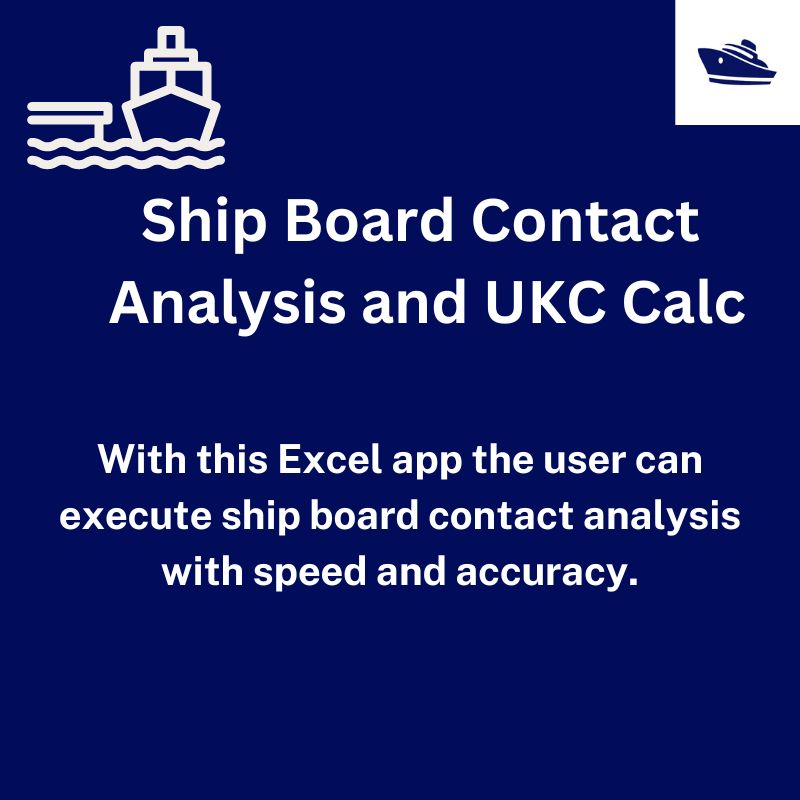
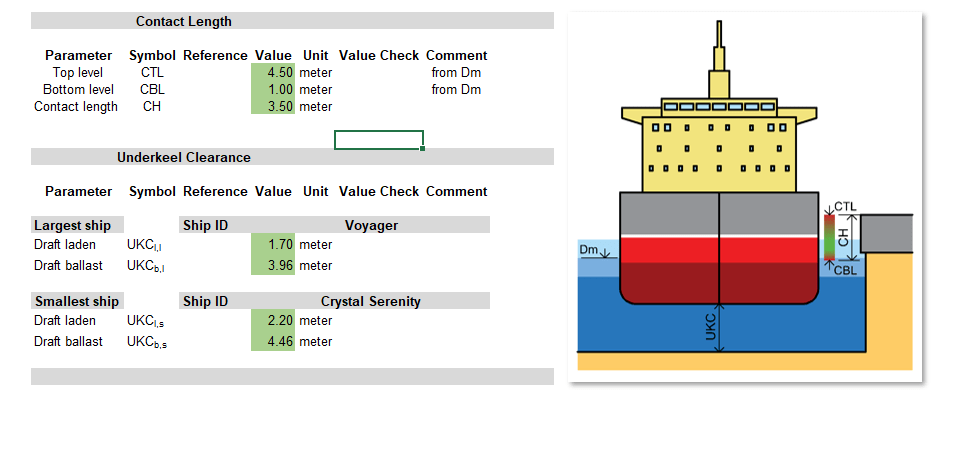
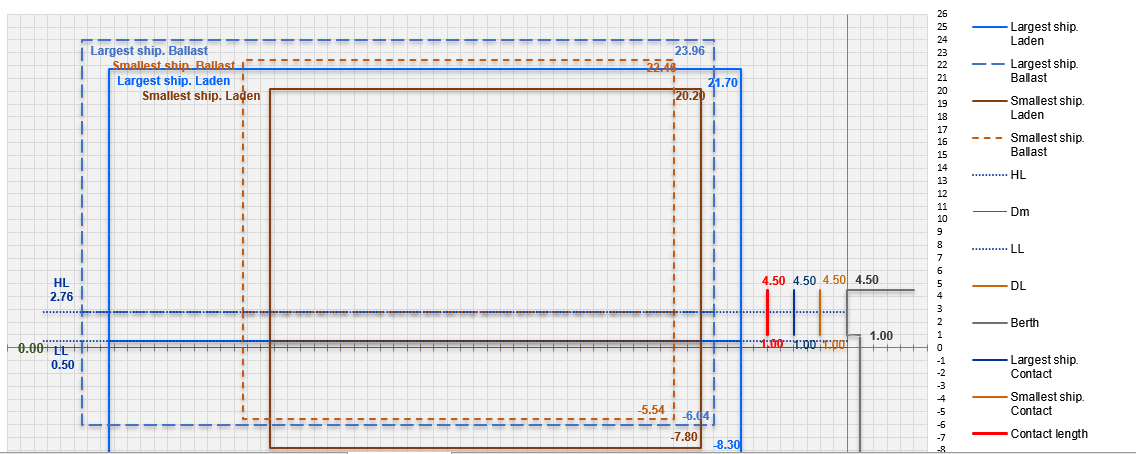
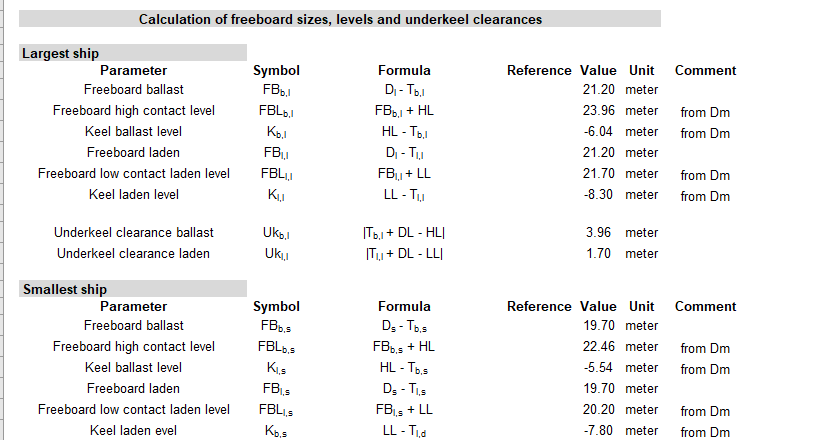
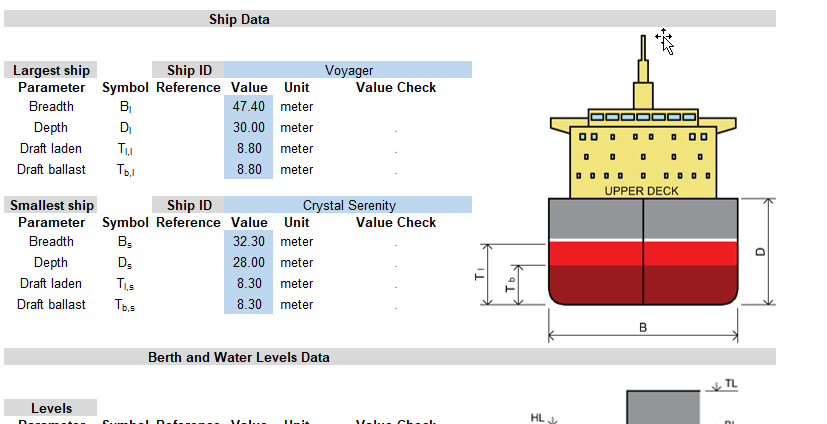
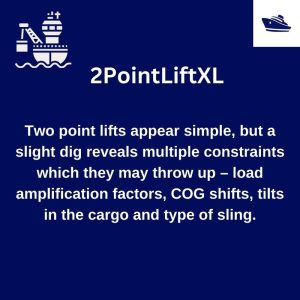
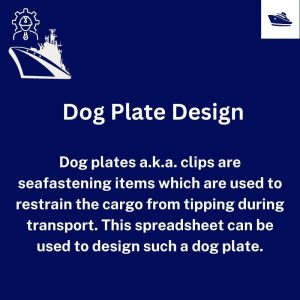
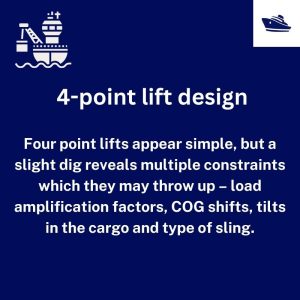
Reviews
There are no reviews yet